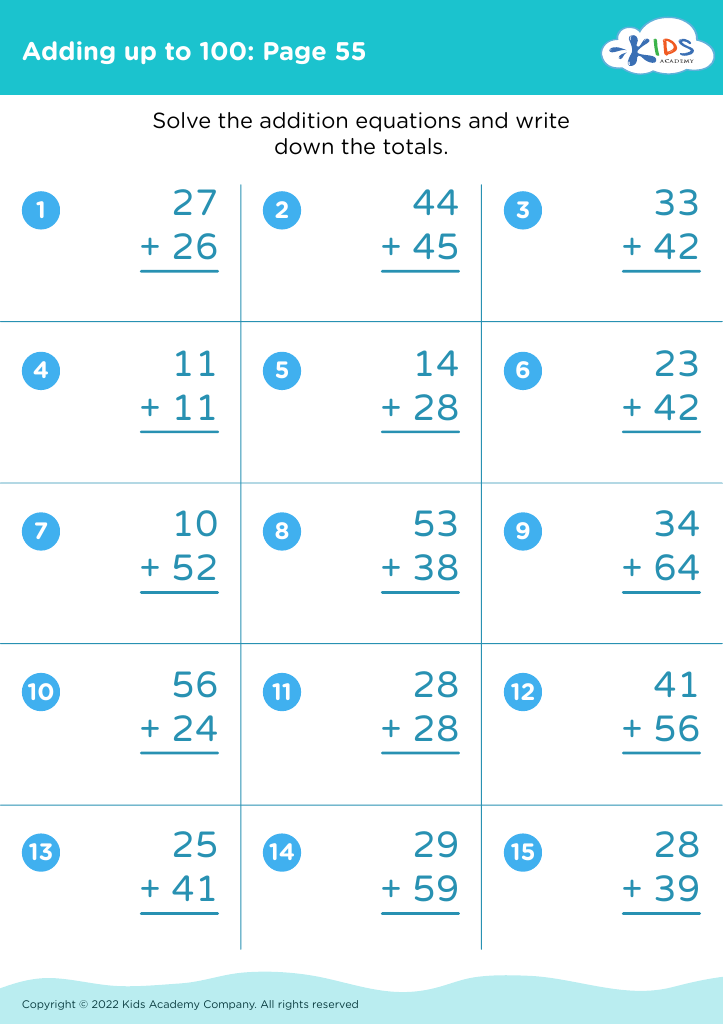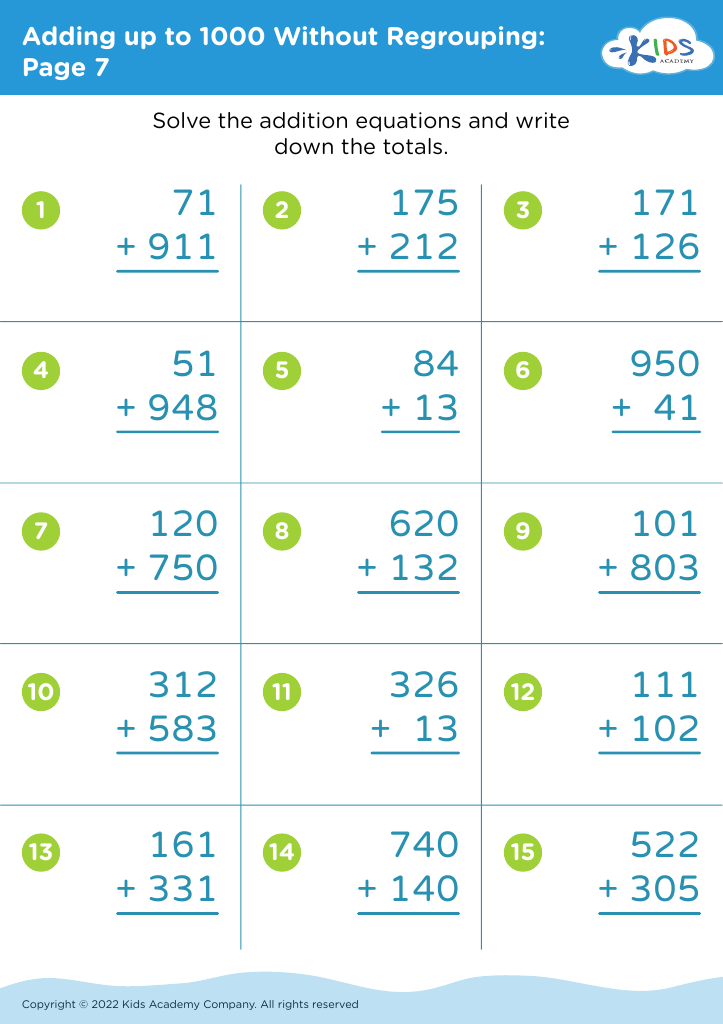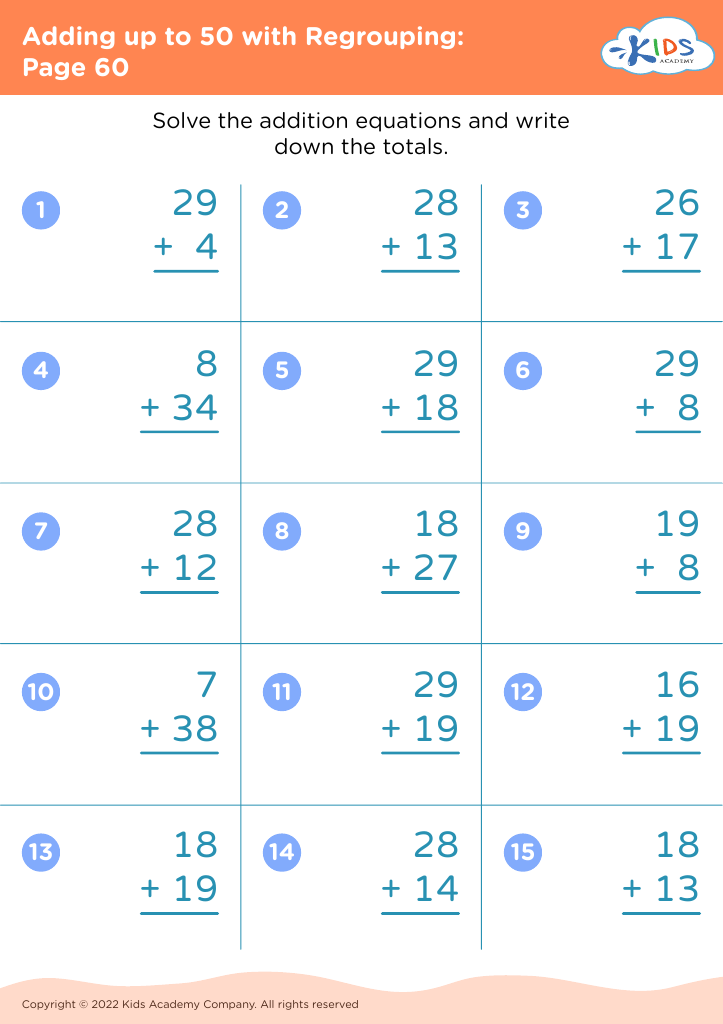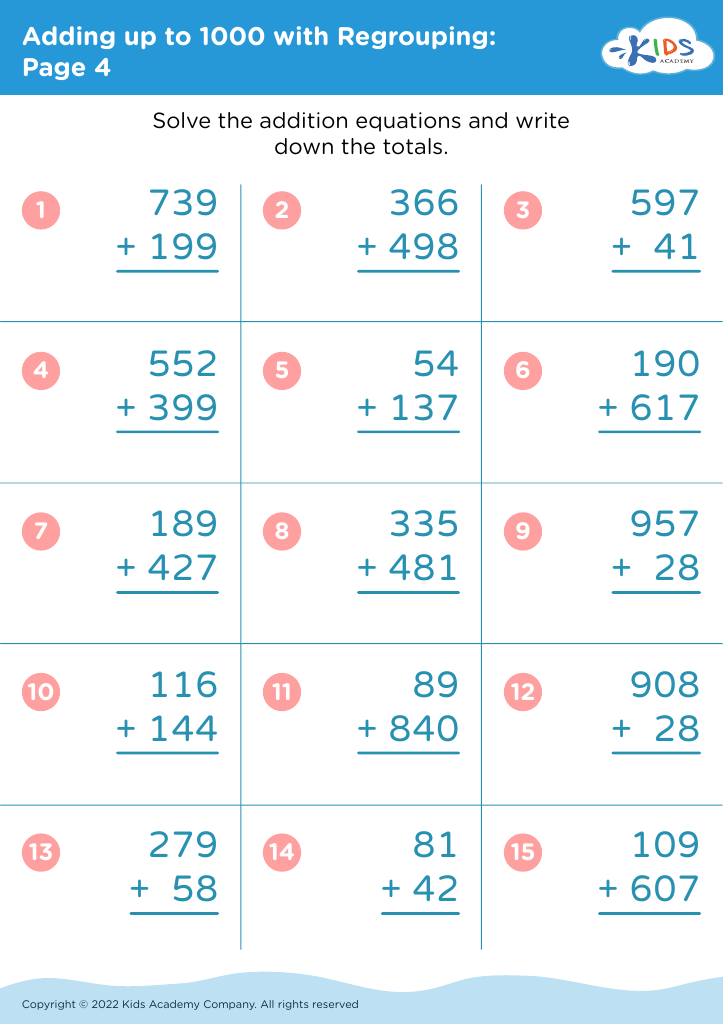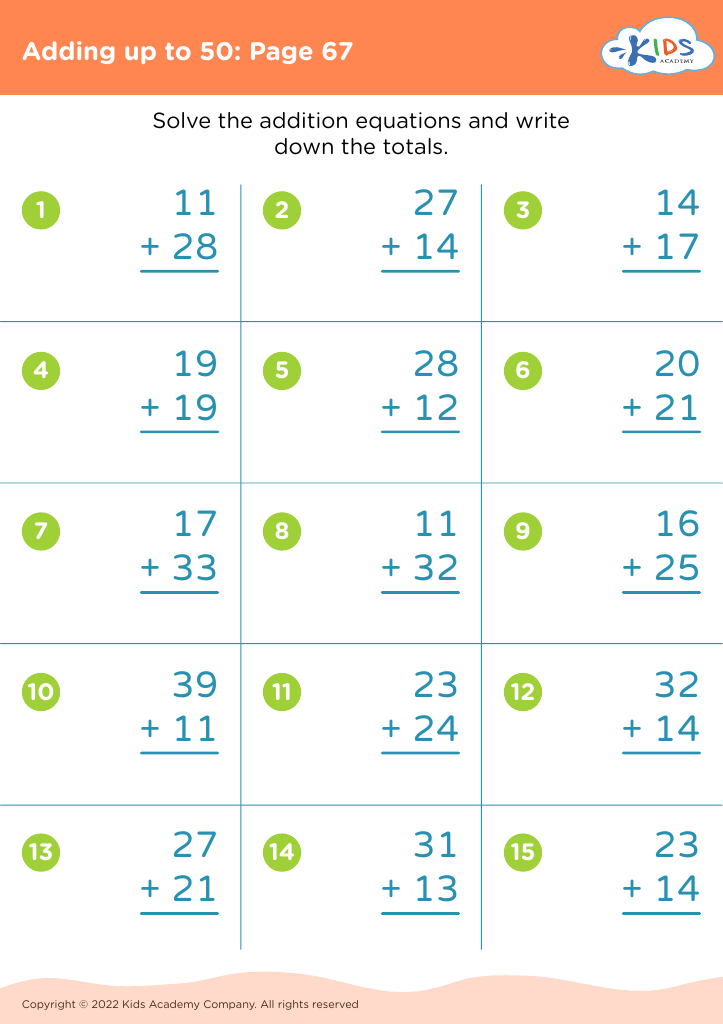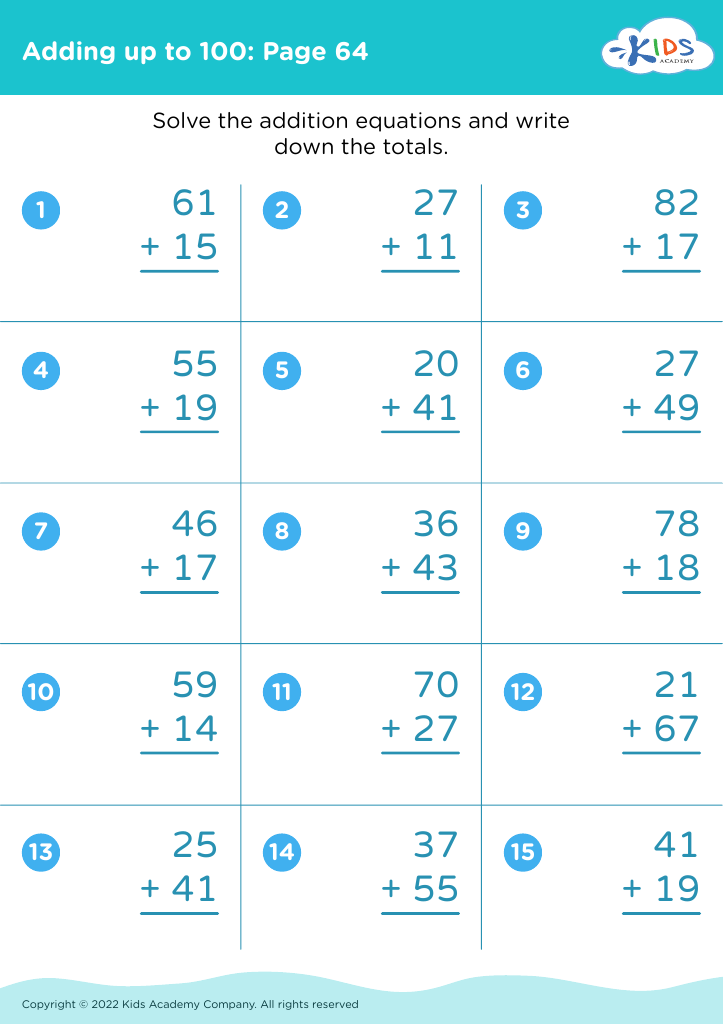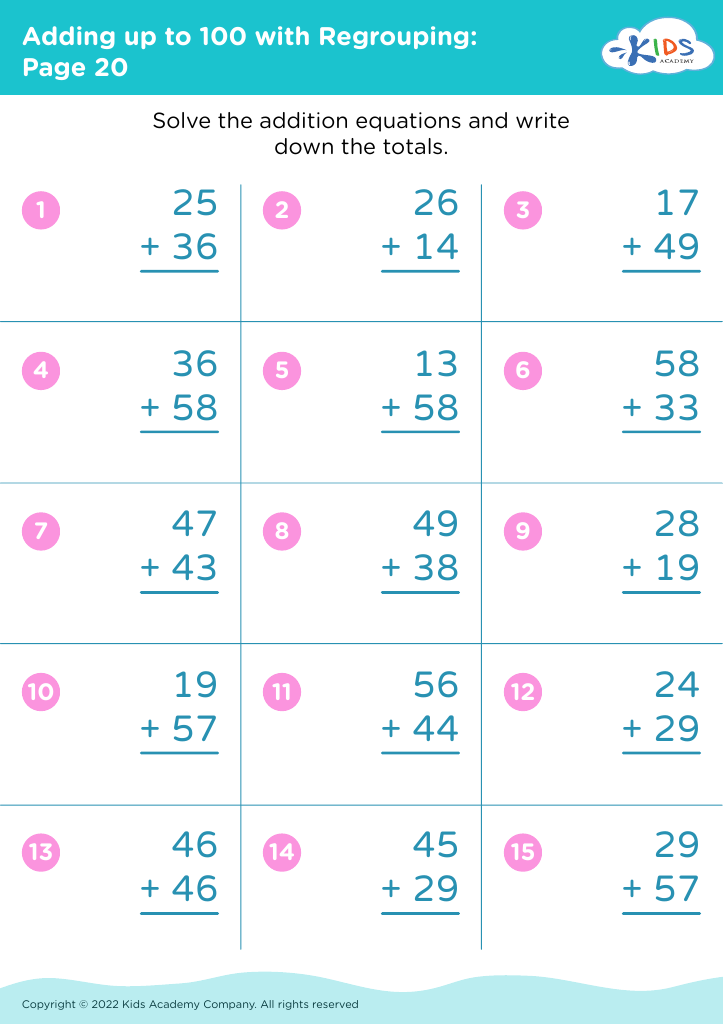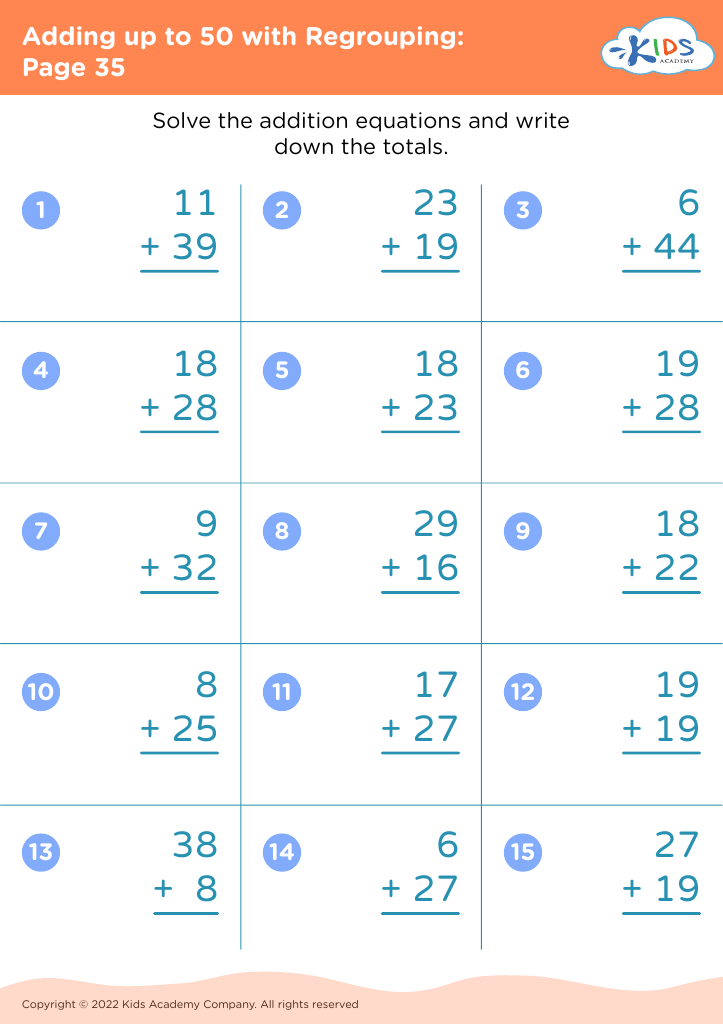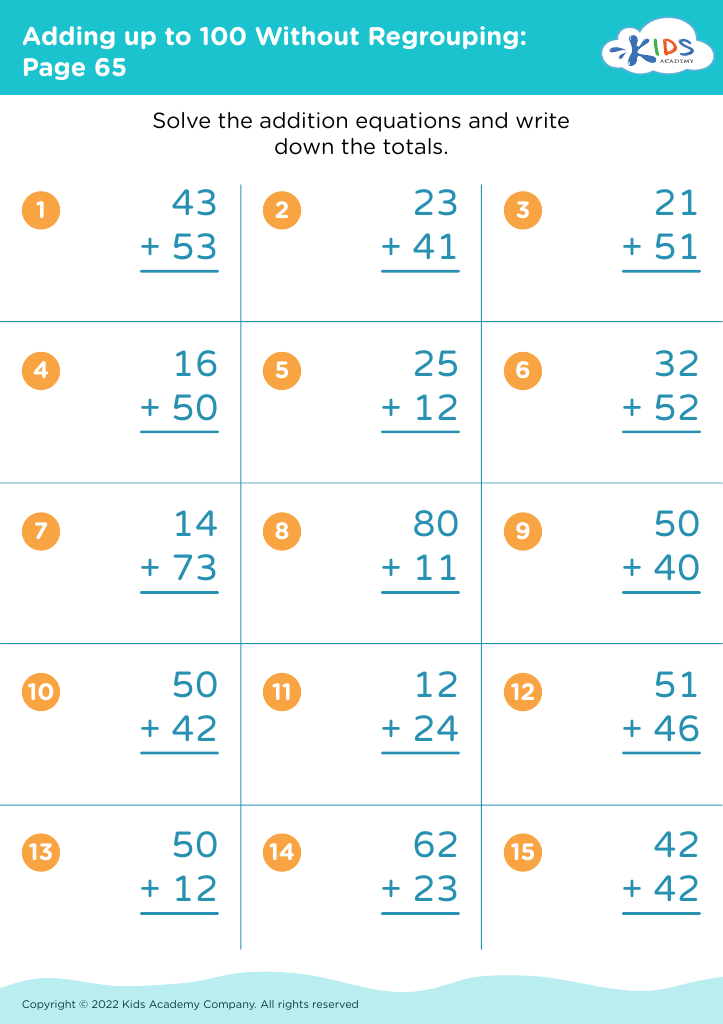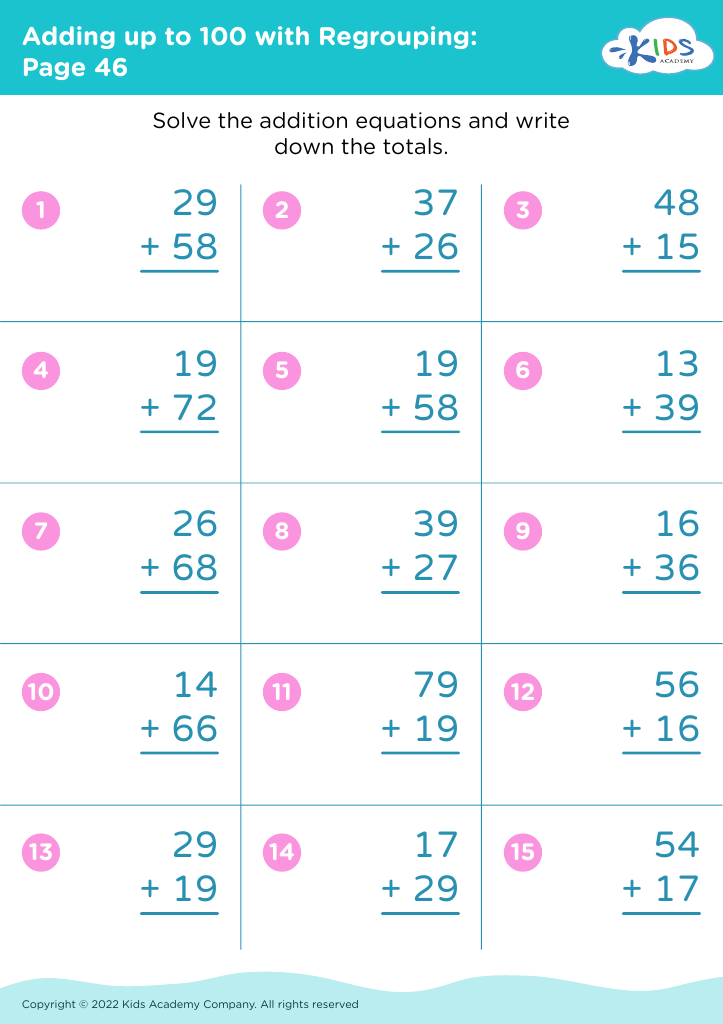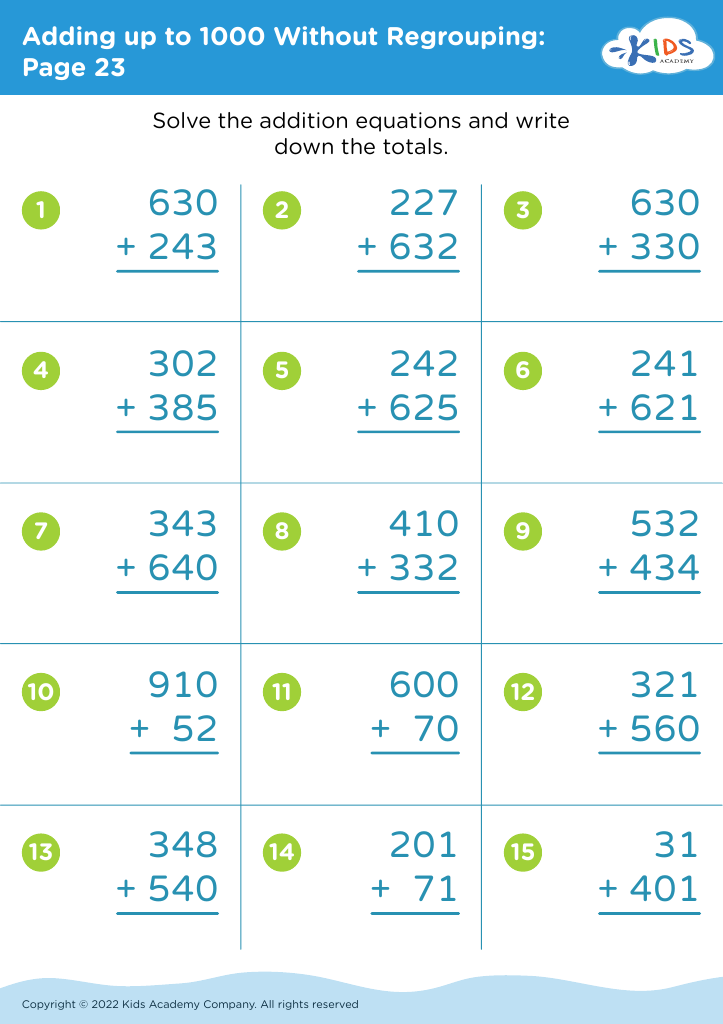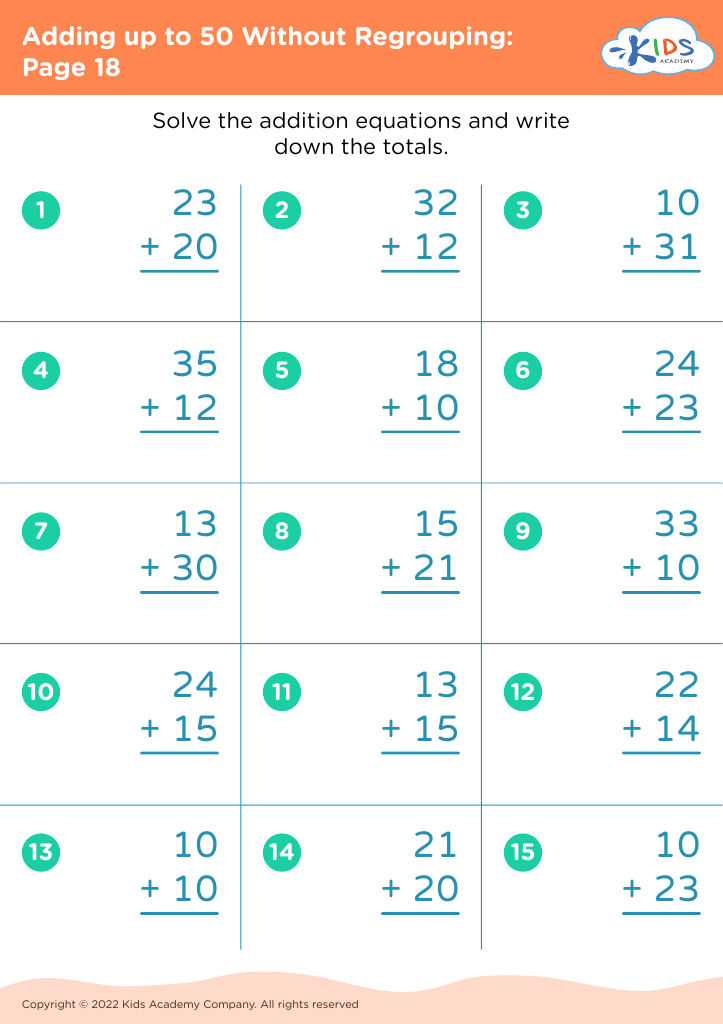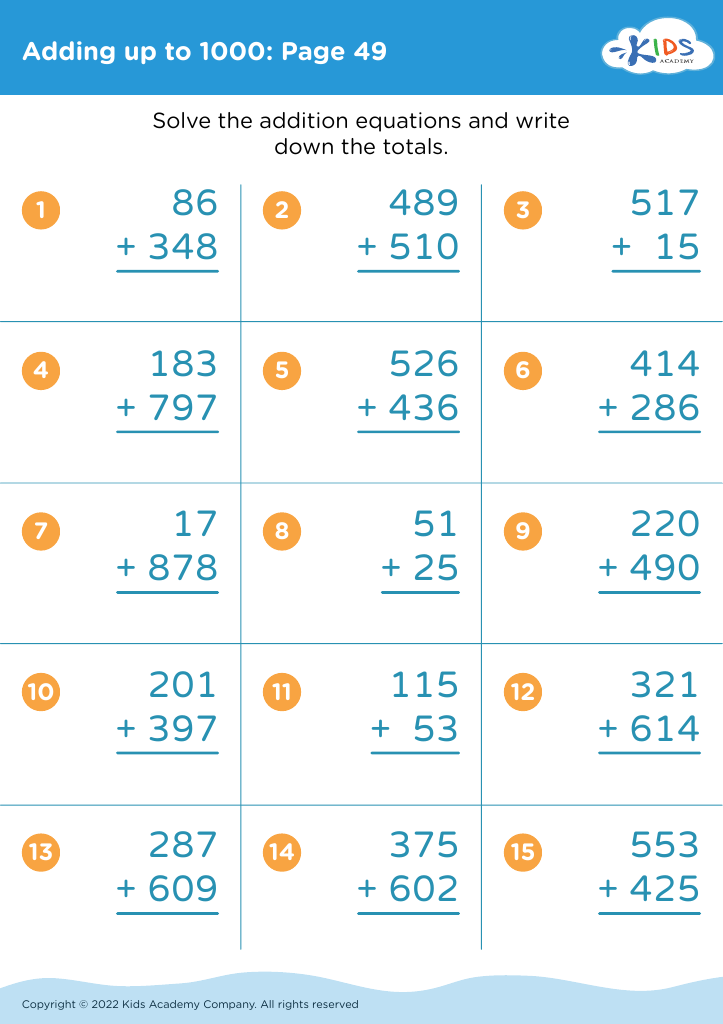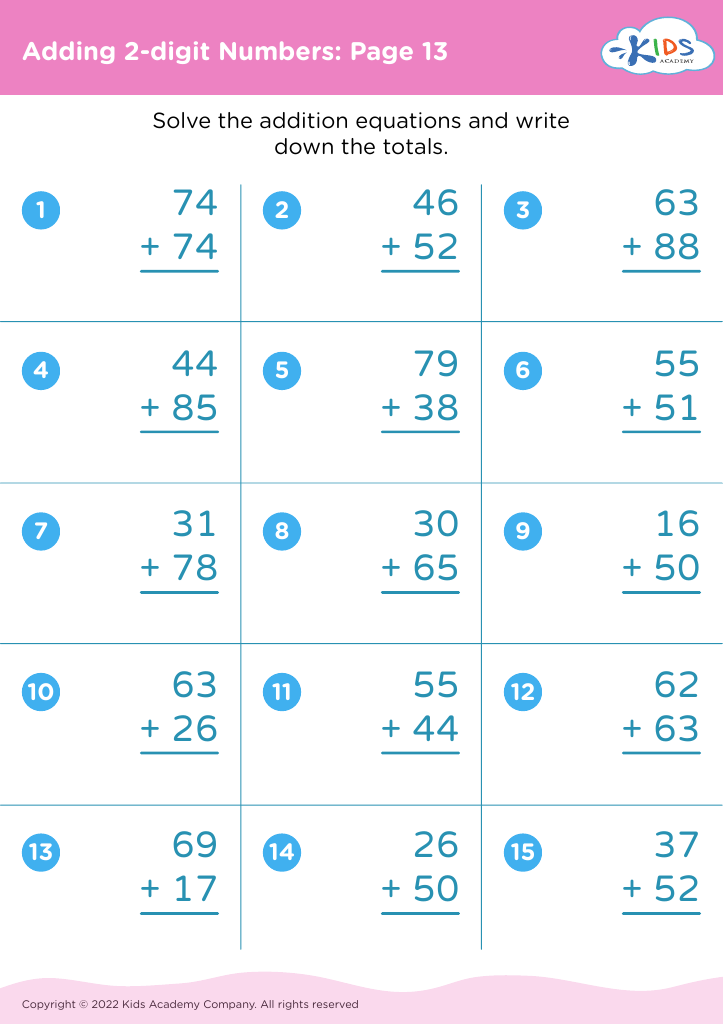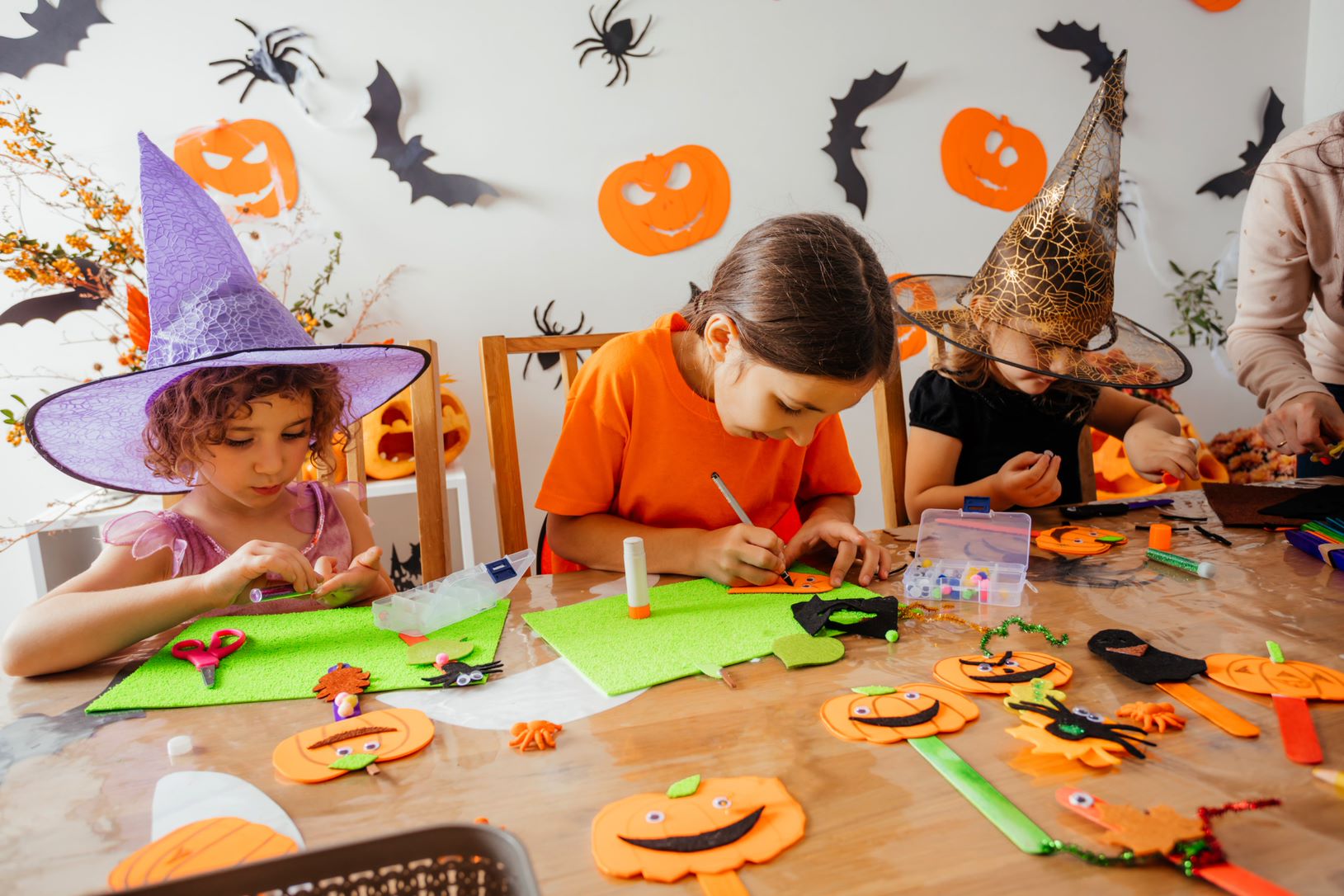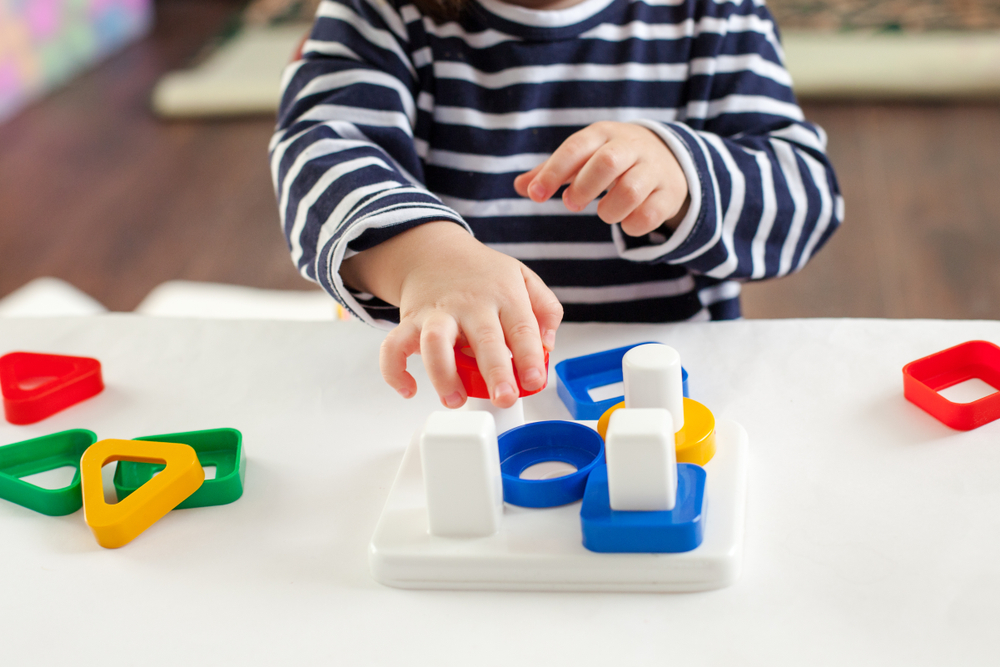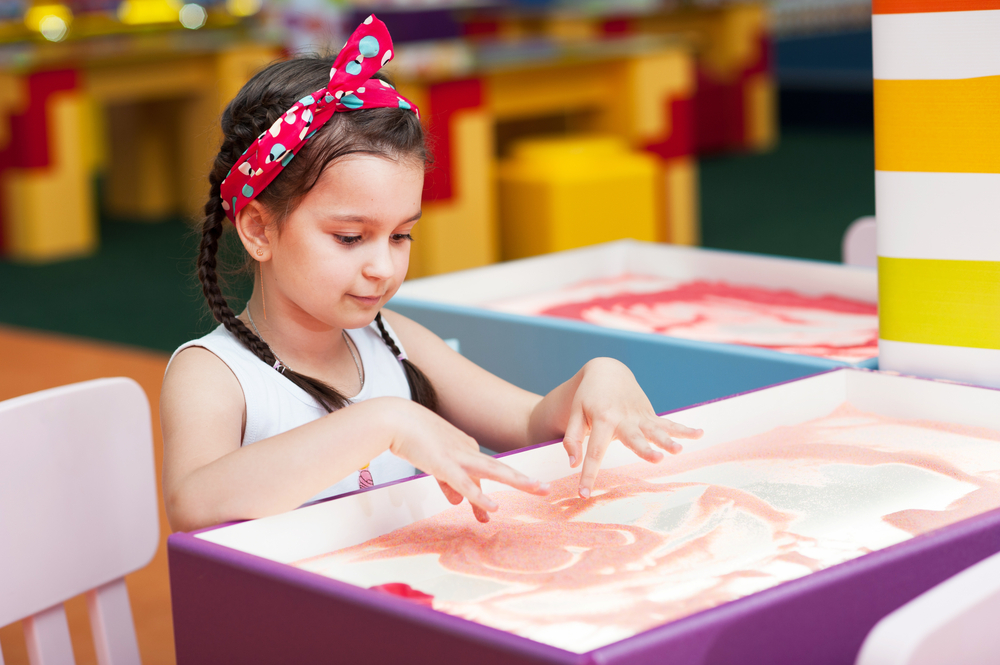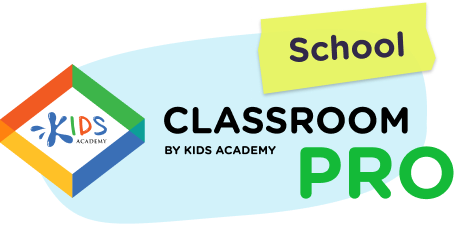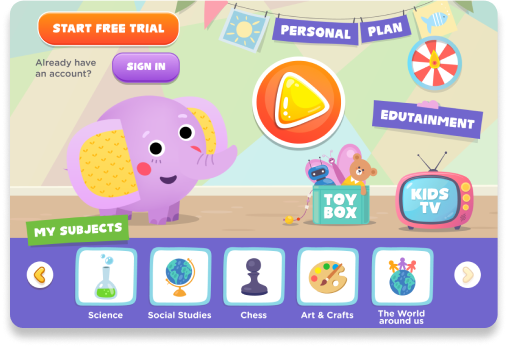Understanding fractions Math Worksheets for Ages 5-9 - Page 3
215 filtered results
-
From - To
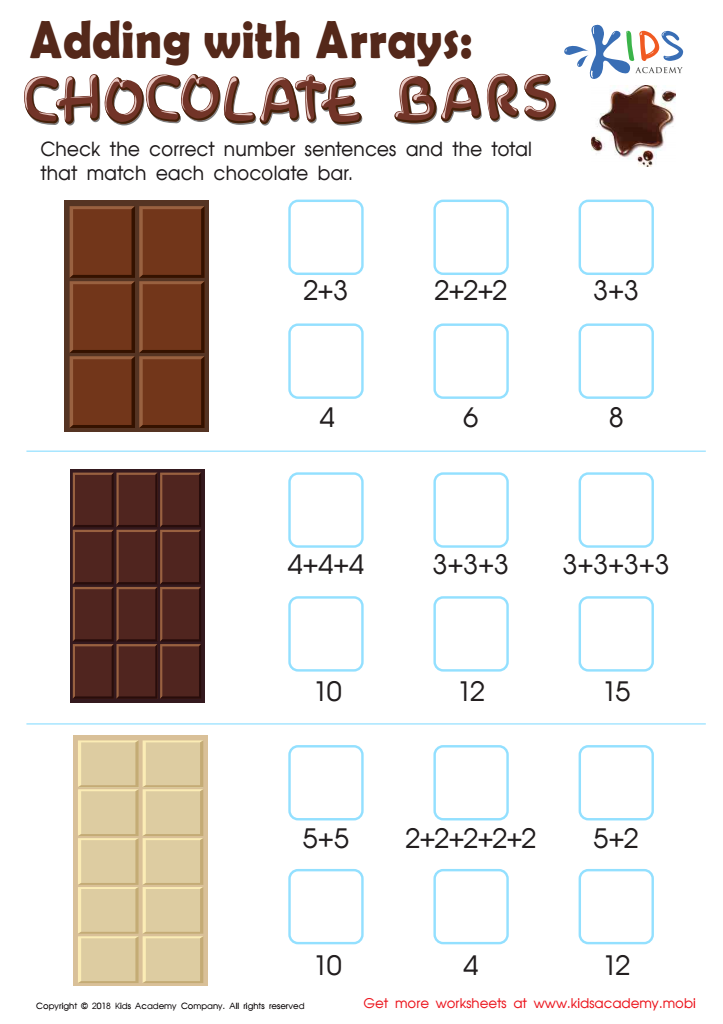

Adding with Arrays: Chocolate Bars Worksheet
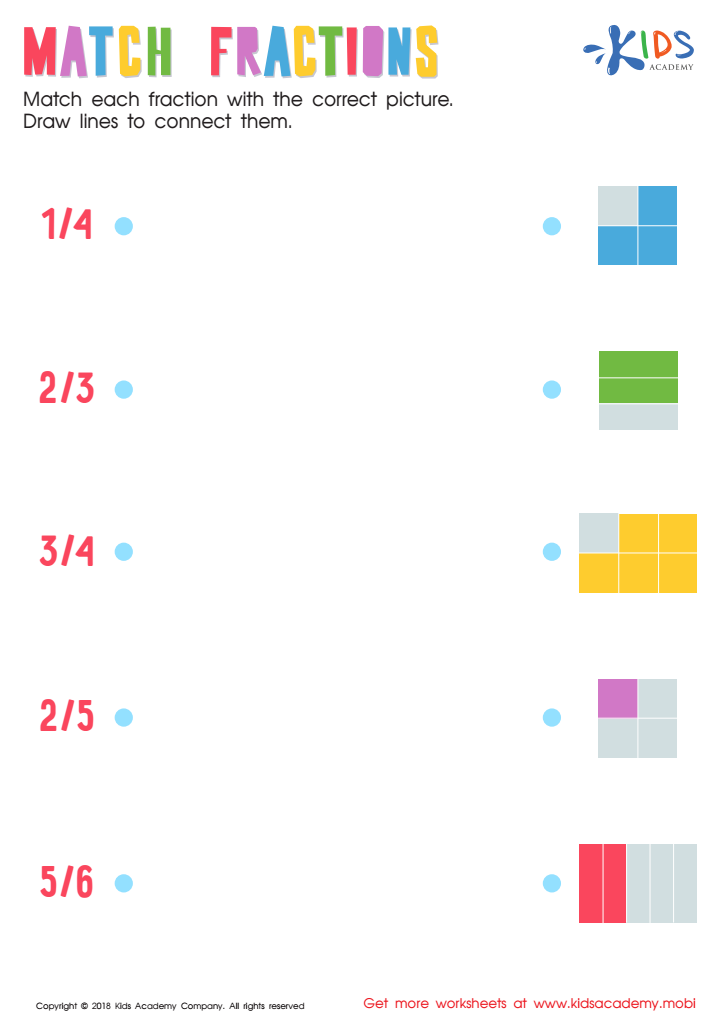

Match Fractions Worksheet
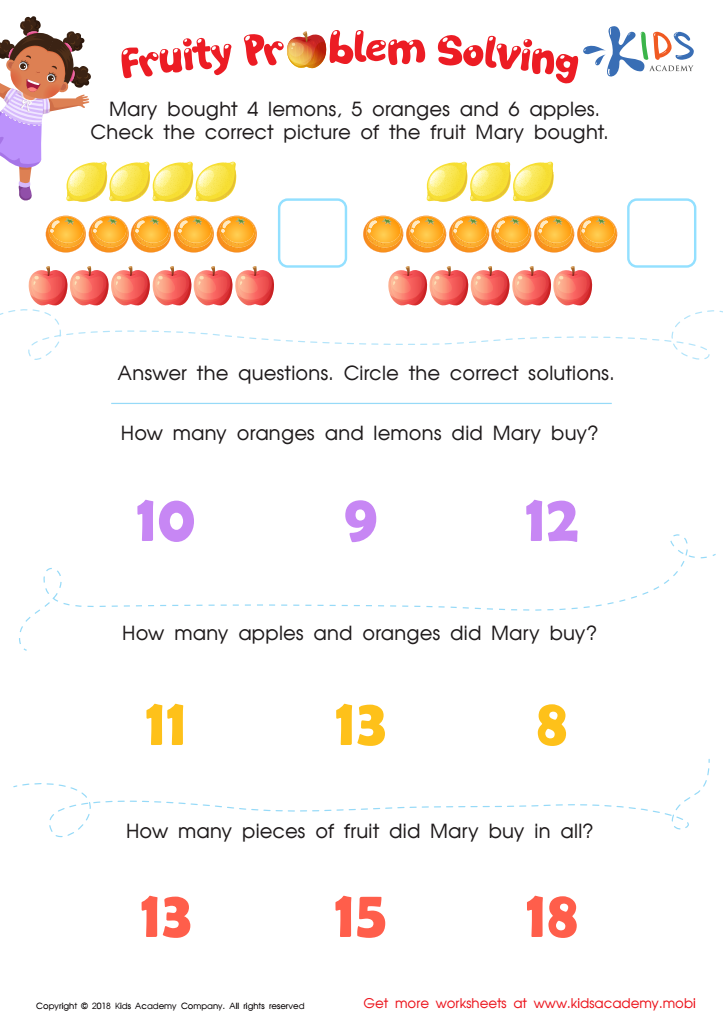

Fruity Problem Solving Worksheet
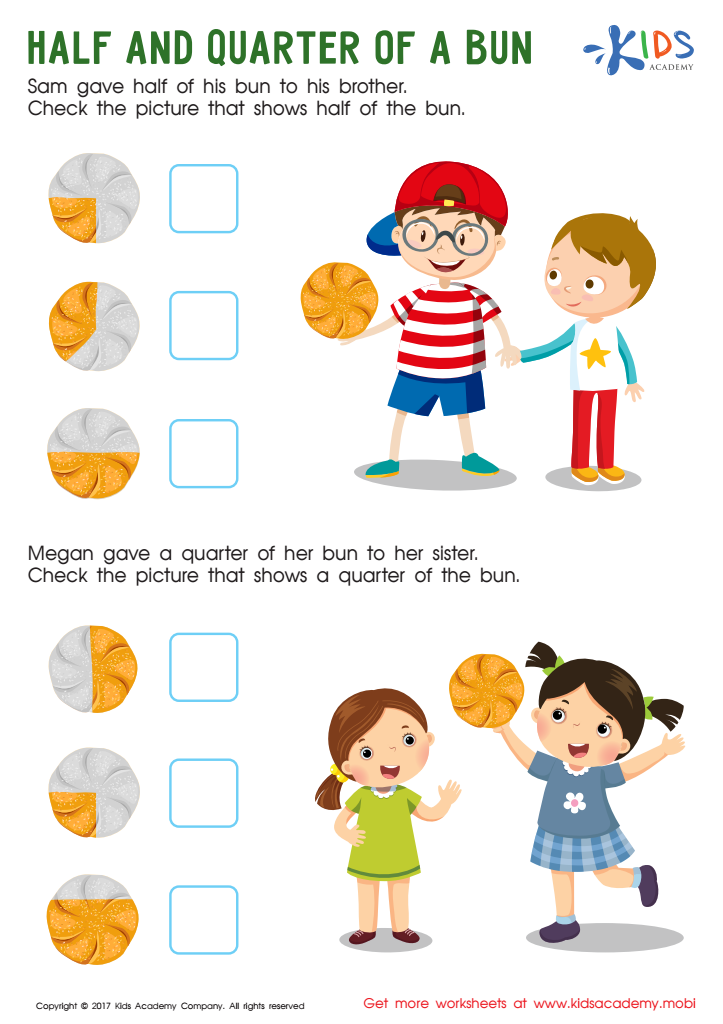

Half and Quarter of a Bun Worksheet


Halves and Fourths for the House Worksheet
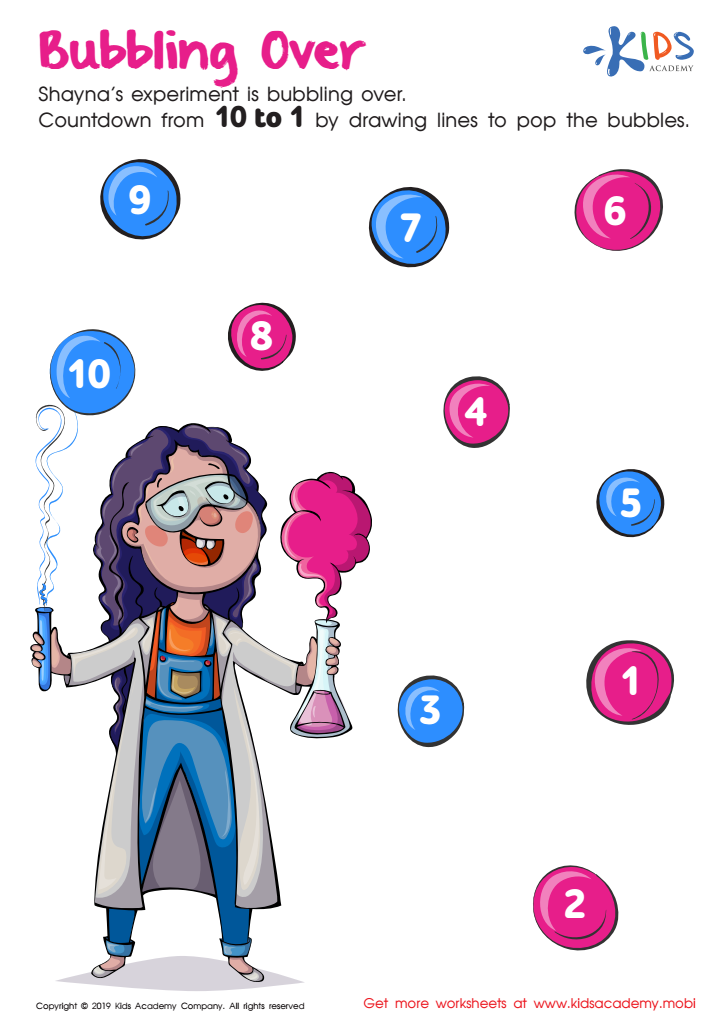

Bubbling Over Worksheet
Understanding fractions is foundational for children aged 5-9, making it a critical area of focus for parents and teachers. At this developmental stage, children are beginning to grasp mathematical concepts, and introducing fractions helps them build essential skills in number sense and critical thinking. By learning about fractions, children can understand parts of a whole, which lays the groundwork for more complex mathematical operations, such as addition, subtraction, and even division in later grades.
Moreover, grasping fractions enhances real-world applications. From sharing a pizza to measuring ingredients in cooking, fractions play an integral role in everyday life. When parents and teachers prioritize fractions, they prepare children for practical situations they will encounter, reinforcing their learning through relatable examples.
Additionally, a solid understanding of fractions can significantly impact a child's confidence in math. Early struggles with fraction concepts can lead to longer-term difficulties in mathematics, potentially causing math anxiety. By fostering a supportive and engaging learning environment around fractions, educators and parents can cultivate a positive attitude towards math, ultimately improving children's performance and their long-term love for learning. Encouraging a growth mindset in young learners about fractions can lead to success in not just math, but various disciplines throughout their education.
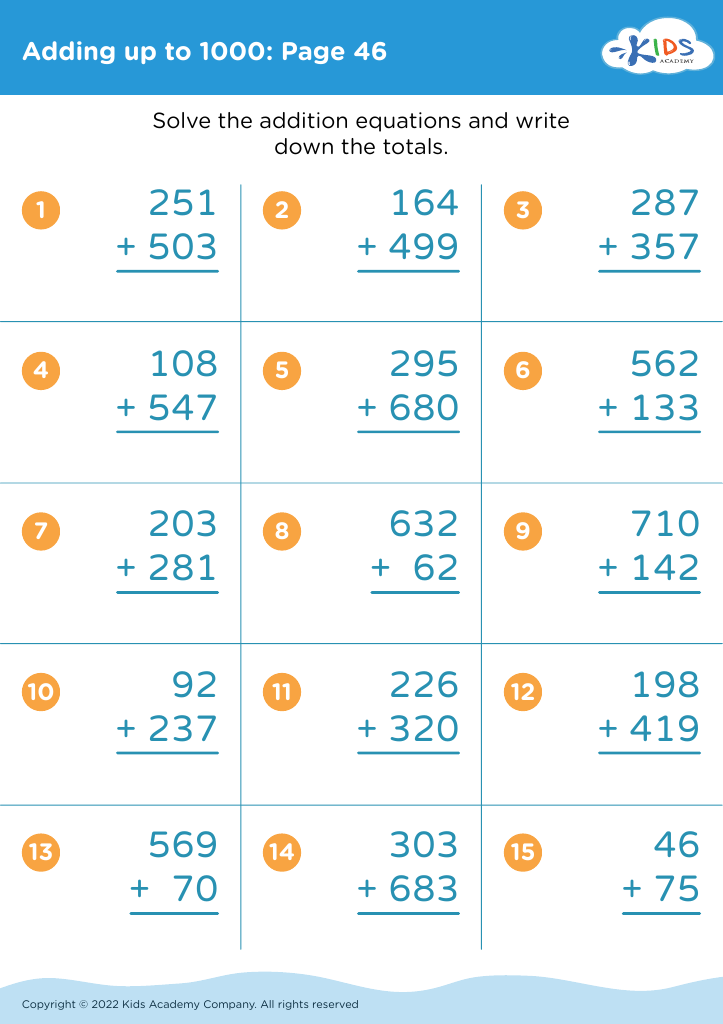
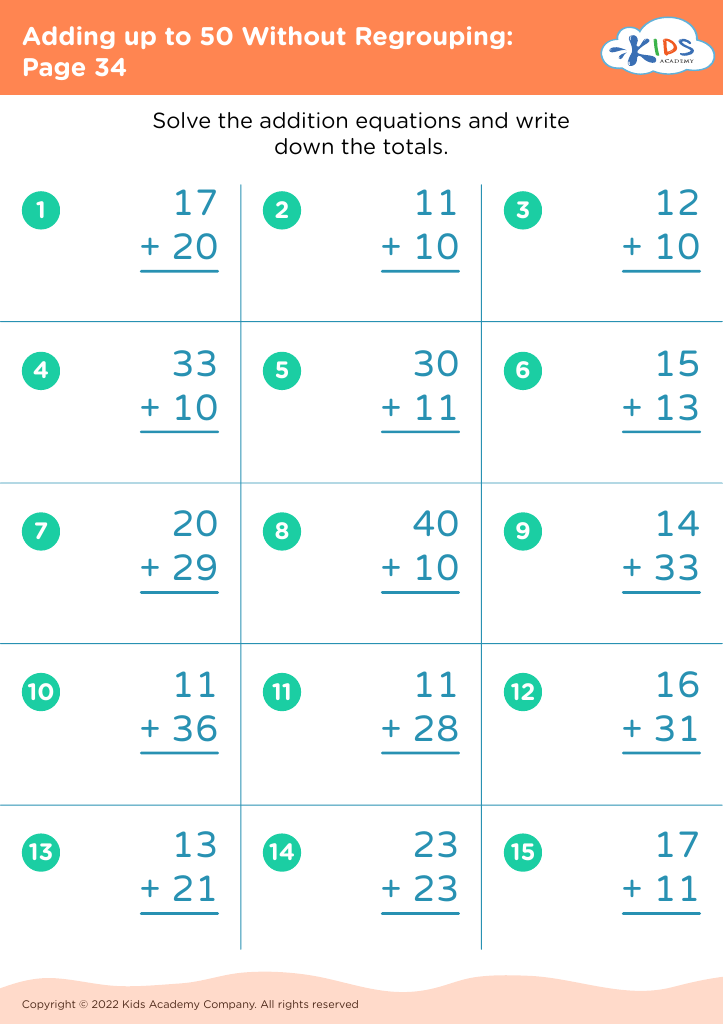
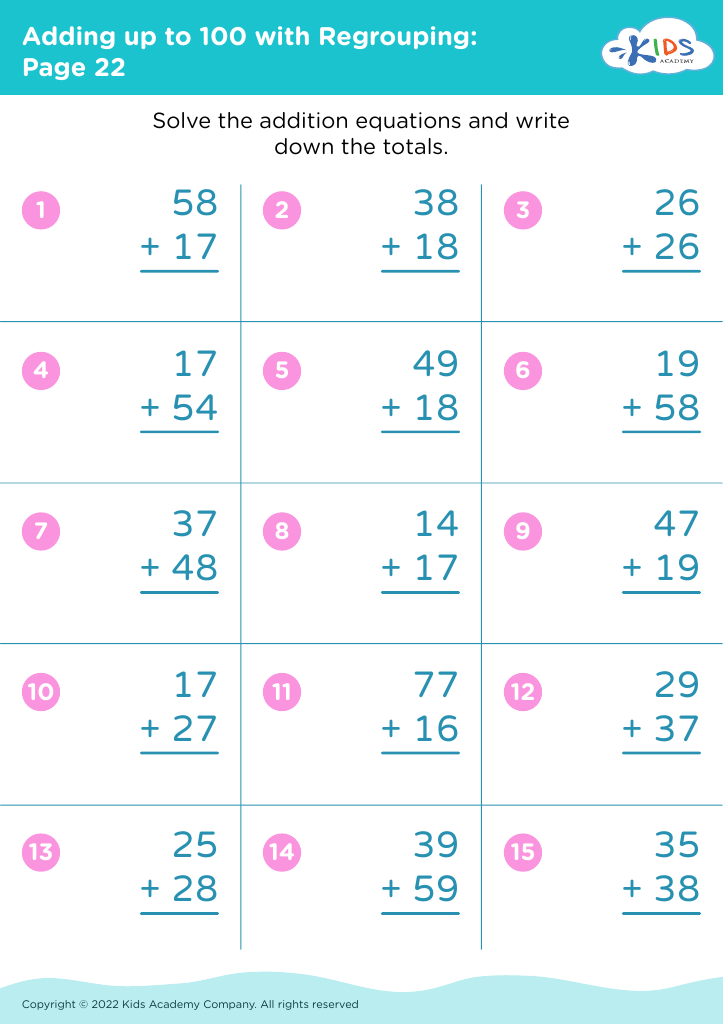
 Assign to My Students
Assign to My Students
